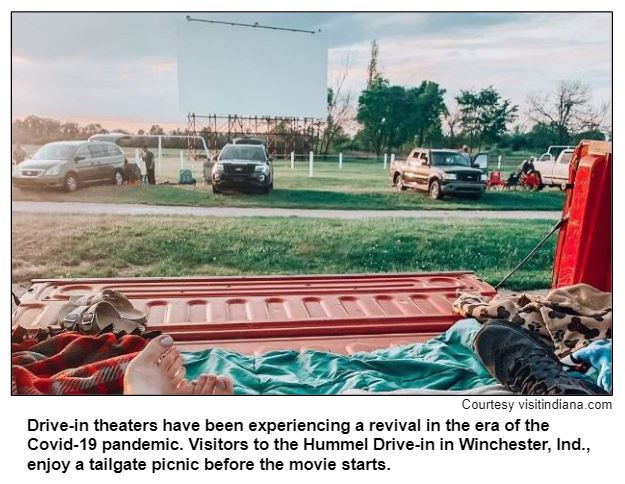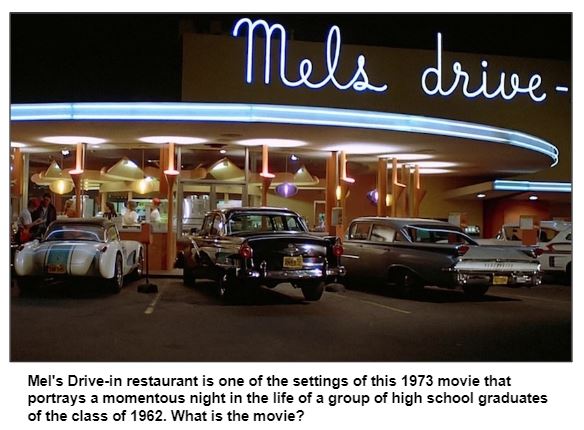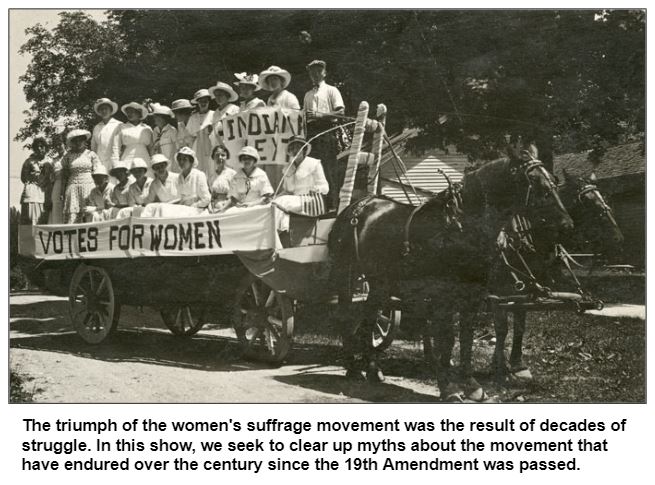
Saturdays, noon to 1 p.m. ET on WICR 88.7 FM.
Or stream audio live from anywhere on WICR Online!
You can listen to recent shows by clicking the podcast links below, or check out our extensive archive of past shows available as podcasts.
August 15, 2020
Drive-in movie theaters
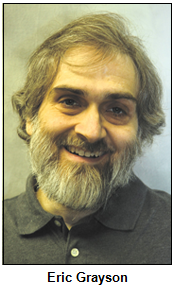 Like an almost-forgotten Hollywood classic enjoying an unexpected revival of interest, drive-in movie theaters are in the spotlight again with the Covid pandemic-related resurgence of outdoor film showings.
Like an almost-forgotten Hollywood classic enjoying an unexpected revival of interest, drive-in movie theaters are in the spotlight again with the Covid pandemic-related resurgence of outdoor film showings.
As if on cue, Hoosier History Live will explore the rise and fall of drive-in theaters, which boomed in popularity in the years after World War II. During the 1950s, more than 120 drive-ins flourished across Indiana, according to driveinmovie.com.
The Westlake Drive-in on the west side of Indianapolis, one of the state's most popular venues for outdoor movies, typically was jammed with more than 1,200 cars per night, according to a retrospective story on WRTV-Channel 6. In contrast, only 75 vehicles were counted at the Westlake when it closed in 1982. It was replaced on its site at West 10th Street and High School Road by a healthcare facility.

For our show, Nelson's guest will be a movie preservationist and collector who is among those converting from indoor to outdoor showings. Film historian Eric Grayson has shifted from indoor screenings of vintage movies at Garfield Park to "drive-in style" events for at least the next few months at the park on the south side Indianapolis.
With Eric joining Nelson, we will explore the factors that sparked the heyday of drive-in theaters, which featured large outdoor screens, projection booths, concession stands and, in some cases, playgrounds, picnic tables and other enticements for movie-goers.
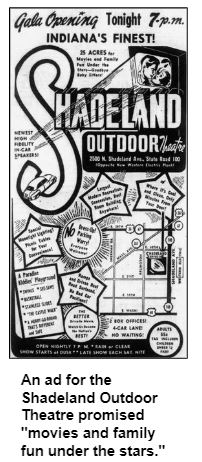
We also will delve into the factors that spelled doom for so many drive-ins. They included rising real estate values in cities that made summer-only land usage impractical; drive-in theaters that have endured tend to be in small towns or rural areas.
According to an article published by the Smithsonian Magazine, even in the heyday of drive-ins during the 1950s movie studios preferred to slot their top first-run releases into indoor cinemas because of scheduling flexibility that resulted in more ticket sales. An indoor theater, the article notes, "could show one film five or six times a day instead of only at night ... Drive-ins were left to show B movies."
But not always. Many drive-ins specialized in family-oriented fare. Parents often preferred drive-ins because of the ease of bringing young children (and sometimes even their dogs) in their cars. At the other extreme, some outdoor theaters went the X-rated route during their waning years.
At Garfield Park, showings of vintage movies from the collection of our guest Eric Grayson will include Seventh Voyage of Sinbad (1958) on Aug. 22, This Island Earth (1955) on Sept. 19 and others; more details are available online.
Outdoor movie theaters in Indiana that have continued to endure include the Centerbrook Drive-in in Martinsville and the Skyline Drive-in in Shelbyville.
Those that bit the dust include the Shadeland Drive-in in Indianapolis, which, according to an article on Historic Indianapolis, closed in 1985 after a run of nearly 30 years.
Roadtrip: 13-24 Drive-In in Wabash
Guest Roadtripper Suzanne Stanis, Director of Heritage Education at Indiana Landmarks, suggests a visit to the 13-24 Drive-In, which has been a landmark in Wabash since opening in 1951. Its builder, Truman Rembusch, was a leader in the motion picture industry who improved screen quality and patented a ticket counting system. Rembusch's Syndicate Theatres, founded by his father, also operated such well-known Indiana venues as the Art Craft in Franklin and the Crump in Columbus.
Suzanne tells us that the 13-24 got its unusual name through a contest held prior to the drive-in's opening, with the winning name referring to its location near the intersection of State Road 13 and Highway 24. According to the 13-24's website, when the theater opened in the early '50s its screen was among the largest in the country.
The Beauchamp families of Wabash purchased the drive-in in 2011 and it is now operated by the Honeywell Foundation, a nonprofit dedicated to arts-based programming. Proceeds from the $6 carload entry fee and concessions benefit the Foundation. In addition to movies, the drive-in hosts live concerts.
In the current Covid-19 pandemic, the drive in is operating under social-distancing adaptations, which mandate the purchase of tickets and snack orders online. Check out their FAQ page for more information.
History Mystery
A drive-in theater is among the settings featured in one of the most popular movies of 1973. So is a drive-in restaurant, where roller-skating carhops serve customers.
The movie was released in 1973 but is set in 1962, during the last evening of summer vacation for a group of recent graduates of a small-town high school. The movie features a drag race, cruising, a sock hop and a soundtrack of "oldies" that were popular during the early 1960s. The movie was promoted with the tagline "Where were you in '62?"
Fun fact: When the movie, which became an unexpected hit, was released in 1973, it was shown at the Shadeland Drive-in in Indianapolis.
Question: What was the popular 1973 movie that was set, in part, at a drive-in theater in 1962?
The call-in number is (317) 788-3314. Please do not call in to the show until you hear Nelson pose the question on the air, and please do not try to win if you have won any other prize on WICR during the last two months. You must be willing to give your first name to our engineer, you must answer the question correctly on the air and you must be willing to give your mailing address to our engineer so we can mail the prize pack to you.
The prizes this week are four daytime general admission tickets to Conner Prairie, plus four 1859 Balloon Voyage tickets, courtesy of Conner Prairie. Now open.
By the way, if your organization would like to offer prizes to be used on the show, email molly@hoosierhistorylive.org. It's a great way to promote your group!
Seeking internet marketing expert
Like every other successful show on radio, we've been reaching more and more listeners through podcasts. As Hoosier History Live fans discover that they can listen at their convenience and access our extensive library of past shows, more and more are using a favorite podcast purveyor like Apple Podcasts and Stitcher to listen on their phones, tablets, and home computers.
But we want to expand that reach even farther.
That's why we're seeking an expert in digital media to help us effectively market our podcasts beyond our current listenership. By growing our audience, we will make ourselves more attractive to community businesses and organizations who can offer the financial support that allows us to produce the shows you love.
If you know any tech-savvy marketing experts who might take on the challenge of marketing and growing our online presence, please have them contact producer Molly Head at molly@hoosierhistorylive.org. This might make a great project for a college student majoring in business or internet marketing, or a successful tech marketing entrepreneur who would work with us as a consultant.
We believe that we have an outstanding product in Hoosier History Live, and we are open to exciting new possibilities in the ever changing world of online media. But could use some help in navigating the territory. Please spread the word!
Nelson Price, host and historian
Molly Head, producer/general manager, (317) 927-9101
Mick Armbruster, associate producer
Cheryl Lamb, administrative manager
Richard Sullivan, senior tech consultant
Pam Fraizer, graphic designer
Garry Chilluffo, consultant
Please tell our sponsors that you appreciate their support!

 For organizational sponsorship, which includes logos, links, and voiced credits in the show and in podcasts, email molly@hoosierhistorylive.org, or call (317) 927-9101 for information. Our podcast listens are increasing and we are being distributed on Indiana Memory and the National Digital Public Library. Grow with us as our podcast and internet presence expands! Thanks also to Visit Indy, Fraizer Designs, WICR-FM, Henri Pensis, Aaron Duvall, Kielynn Tally, Heather McIntyre, Justin Clark, and many other individuals and organizations.
For organizational sponsorship, which includes logos, links, and voiced credits in the show and in podcasts, email molly@hoosierhistorylive.org, or call (317) 927-9101 for information. Our podcast listens are increasing and we are being distributed on Indiana Memory and the National Digital Public Library. Grow with us as our podcast and internet presence expands! Thanks also to Visit Indy, Fraizer Designs, WICR-FM, Henri Pensis, Aaron Duvall, Kielynn Tally, Heather McIntyre, Justin Clark, and many other individuals and organizations.
Thank you!
We'd like to thank the following recent, new and renewal contributors whose donations help make this show possible!
- Bruce and Julie Buchanan
- Dr. Robert and Jill Clements
- Tom Spalding
- Ryan Zumbahlen
- David Yount
- Linda Gugin and Jim St. Clair
- Doug Winings
- Peggy Sabens
- Carl and Kathleen Widland
- Carol Bacon
- Rachel Perry
- Tom Swenson
- Dr. James Madison
- Stacia Gorge
- Dr. Geoffrey Golembiewski
August 22, 2020 - coming up
Women's suffrage in Indiana: the myths
Amid the celebrations of the 100th anniversary of women's voting rights this month, it's important to acknowledge the arduous, decades-long struggles that were involved in reaching that historic milestone.
It's also important to dispute myths about the women's suffrage movement that have persisted ever since the 19th Amendment became official on Aug. 26, 1920.
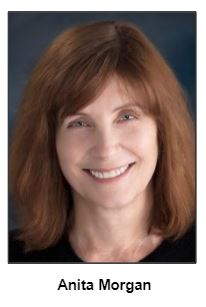
Among the myths that she plans to challenge: the misconception that the suffrage movement in the Hoosier state primarily consisted of, as she puts it, "white, Protestant, middle-class women." Although African-American and Jewish women may have been excluded in other states, Anita's book describes their activist roles in Indiana from the beginnings of women's suffrage in the 19th century.
Legendary entrepreneur Madam C.J. Walker hosted a meeting of an African-American suffrage group at her home in Indianapolis, with public school teachers taking leadership roles. One of the teachers, Francis Berry Coston, also used her position as a literary critic for The Indianapolis News to urge African-American women to vote.
In addition to Indianapolis, African-American chapters of suffrage organizations formed in Marion and Muncie, according to We Must Be Fearless. The book also describes the activism undertaken by the Terre Haute Council of Jewish Women and counterpart organizations in other Indiana cities.
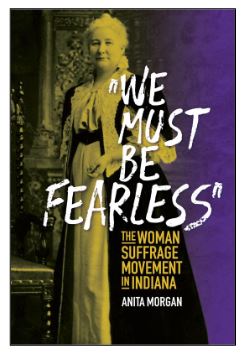
History fact: Clear back in 1909, women ran for school boards in Indianapolis and Terre Haute, the only cities in the state with elected school boards then, according to We Must Be Fearless. Both female candidates won, even though they could not vote yet in national and state elections.
During our show, we also will explore myths that Indiana women did not have an impact on the national level. In fact, many Hoosier suffragists, including several Quakers who were at the forefront of the movement here, ended up in national leadership roles.
Others who attained national prominence included Indianapolis educator and civic leader May Wright Sewall, whom we discussed during a Hoosier History Live show in January. We explored suffrage strides, setbacks and the role of Zerelda Wallace, a former Indiana first lady, during a show in March.
Our guest Anita Morgan will be participating in a virtual Suffrage Centennial Block Party at 11 am on Aug. 29. More information about her presentation, which is being arranged by the Indiana Historical Society, is available online. Her presentation is among a series of events this year, with many coordinated by the Indiana Women's Suffrage Centennial Commission.
© 2020 Hoosier History Live. All rights reserved.
|
